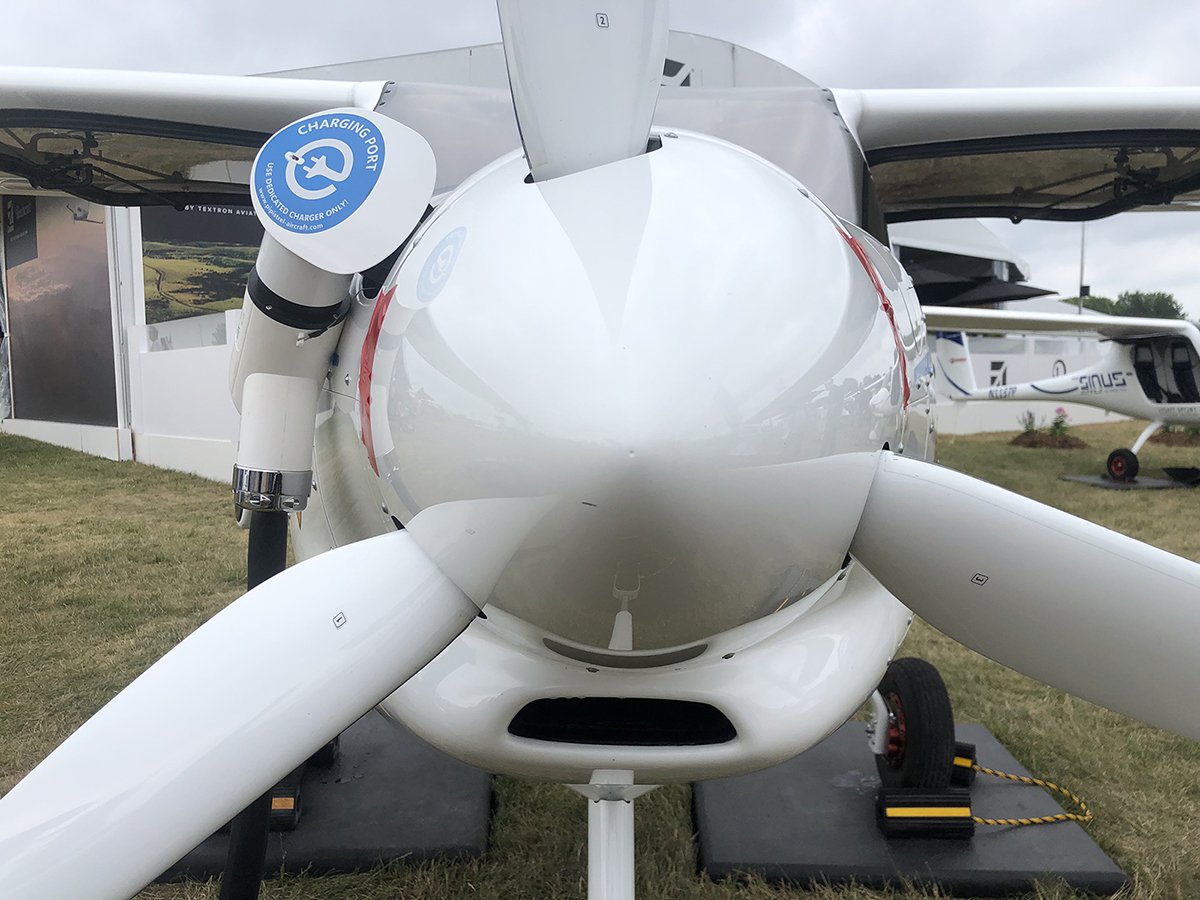Stay Up to Date
Submit your email address to receive the latest industry and Aerospace America news.
Ambient air intakes are one solution, but also create drag
Engineer Matthew Clarke has, over the years, sought to learn as much he can about the specific methods electric aircraft companies are applying to keep lithium-ion batteries below the well-recognized maximum operating temperature of 35 degrees Celsius.
Batteries heat up as the aircraft’s motors draw power from them. If they get too hot, there is a risk of thermal runway, which is when one cell catches fire and triggers overheating of all the others, posing a risk of fire or explosion. The industry has devised methods to keep batteries operating below the danger threshold, such as by drawing in outside air during flight, and sometimes by chilling the battery with liquid coolant — either in flight or before flight.
Clarke, an assistant professor of aerospace engineering at University of Illinois Urbana-Champaign, hasn’t been able to obtain a clear picture of which cooling method, or combination thereof, the industry relies on most.
Cooling strategies are “very proprietary,” said Clarke. In addition to approaching companies himself, he has “asked around, and people say it’s hard to determine how the industry in general is handling the cooling issue.”
Nevertheless, Clarke knows from his research that cooling batteries with ambient air during flight comes with aerodynamic drawbacks.
“When you intake air to cool, your propulsive efficiency reduces. You’re slowing down the air because of the shape of the inlets,” Clarke said. “As the air exits the aircraft, it’s moving slower than the air slipping around the wing, and that creates a pressure differential, turbulence and a pocket of drag — what we call cooling drag.”
Clarke and other researchers will soon have a venue on campus dedicated to studying this cooling drag problem, potential solutions for it, and other issues, such as how batteries heat up and how they degrade over time. Some vacated space in the Aerospace Engineering department is being converted into the Laboratory for Electric Aircraft Design and Sustainability, scheduled to open in January. Clarke is in the process of setting up the lab, which includes placing orders for the equipment and electronics that will push batteries toward their limits, but not beyond, since thermal runaway would pose the danger of fires and explosions.
When a battery is cooled exclusively or in part by pulling in ambient air, Clarke calculates that the resulting drag can reduce total thrust by up to 15%.
To reduce the size of the required inlet and give more design flexibility, some aircraft designs may combine the effect of ambient air with a liquid coolant, similar to the coolant in car radiators. The coolant absorbs heat energy from the battery and sheds it into the airflow, similar to how conventional and electric cars gather air and direct the air over a radiator (sometimes more than one in electric vehicles) with coolant circulating through it.
Consider California-based Joby Aviation: Its planned air taxis would fly short routes of 10 to 15 minutes. Each aircraft would have “active cooling plates mounted between each battery’s individual cells, which maximize coolant flow over the cells’ external surfaces,” according to a statement provided to me.
Photos and videos of air taxis such as Joby’s show openings in the airframe that could be air intakes, but Joby would not elaborate.
Engineers with Slovenia-based Pipistrel, which makes the two-seat electric Velis Electro plane primarily for pilot training, showed me air intake valves on one of the planes they exhibited in July at the AirVenture air show in Oshkosh, Wisconsin.
Tine Tomažič, Pipistrel’s director of engineering and programs, said the aircraft has an onboard, inflight coolant system that requires outside air.
“One of the reasons why Velis Electro is liquid cooled is to achieve lower cooling drag than we would have with only air cooling,” Tomažič said. “We are able to control the airflow much better, and the placement of the intakes and the ducts that move the air through the aircraft.”
He declined to tell me how much drag the air intakes create for the aircraft. According to Pipistrel, the Velis Electro can fly for 50 minutes and still have a battery reserve of 45 minutes.
Another air taxi developer, Vermont-based Beta Technologies, doesn’t do any in-flight battery cooling. That’s so that its Alia aircraft can be as efficient as possible, said Sean Donovan, a mechanical engineer at Beta.
“Cooling drag is definitely a concern, which has kind of shaped some of the architecture of our aircraft,” Donovan said.
Instead, before takeoff, the battery is chilled by circulating liquid coolant through it. This keeps the battery within its safe temperature range for the duration of the planned flight, he said. There is no safety compromise, he added.
“The most demand on the battery is during vertical takeoff and landing, right?” Donovan said. “And because our aircraft is highly efficient while cruising, there’s low power demand during cruise, and the thermal increase in our battery packs is really low.”
Get the latest news about advanced air mobility delivered to your inbox every two weeks.
About paul brinkmann
Paul covers advanced air mobility, space launches and more for our website and the quarterly magazine. Paul joined us in 2022 and is based near Kennedy Space Center in Florida. He previously covered aerospace for United Press International and the Orlando Sentinel.
Related Posts
Stay Up to Date
Submit your email address to receive the latest industry and Aerospace America news.




